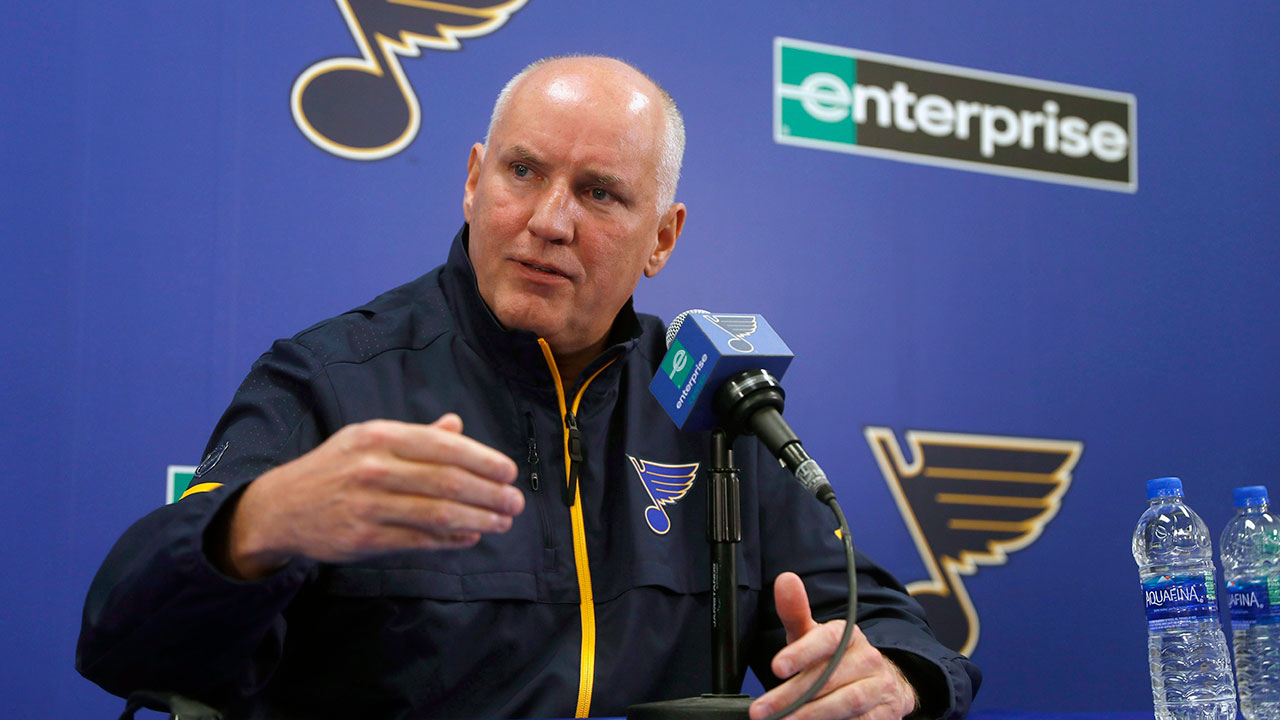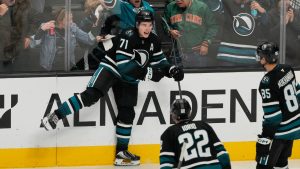BROSSARD, Que.— The question took 24 games to ask, which is exactly how long the respondent had gone without scoring a goal.
As Simon-Olivier Lorange, of La Presse, finally fired it at Brendan Gallagher on Saturday morning, I was thinking about the contrast with Josh Anderson, who scored his first goal in the 24th game of the Canadiens' season.
Why is it that Anderson’s slump was in such sharp focus for weeks while Gallagher’s never hit the light of day until it was just as long as Anderson’s?
Lorange came up with one really good reason when we discussed it just minutes after Gallagher got the monkey off his back in Montreal’s 4-3 shootout win over the New York Rangers, saying the sheer shocking nature of some of Anderson’s misses pointed the spotlight much more in his direction.
He didn’t have to mention the obvious—that there were about eight games in a row, in the middle section of Anderson’s slump, where he went from doing practically all the things you need to do to score to doing almost none of them. There was plenty of contrast with Gallagher right there.
But I think the primary reason his situation came to the forefront so late is because of how consistently he still positively impacted the game without scoring.
Perhaps the Canadiens winning a bit more, or even looking like a better team than they did during the bulk of Anderson’s slump, was a factor as well.
But, as Canadiens coach Martin St. Louis said about Gallagher on Saturday morning, “He’s been playing better than his statistics say.”
We could all see that just by watching the games, hence Gallagher not facing any questions about his slump until hours before he broke it.
After Lorange finally busted the seal, I did the same thing he did and looked at the numbers, finding Gallagher was leading the Canadiens in expected goals and high-danger shot attempts and was second to Cole Caufield in both corsi (shot attempts) and fenwick (unblocked shot attempts) at five-on-five going into the game against the Rangers.
Thesis confirmed.
Gallagher didn’t need to hear the numbers recited to him.
“To be honest, I feel good about my game,” he said on Saturday morning. “Like I’ve said since Marty’s been here, he’s very good at communicating with players to make you understand when you’re doing some good things right. And not seeing results, you’re not going to deviate from the plan all that much.”
“It’s frustrating at times, I’m not going to lie to you,” Gallagher admitted. “You spend your whole life contributing offensively, you want to be able to continue to do that.”
When I asked Gallagher to identify one thing that really might help him continue, he didn’t have to think at all about the answer, which was ironic considering his answer.
“A little bit more composure around the net,” the man in search of his 208th NHL goal said. “I’ve had some looks, had some chances, but maybe it’s just speeding up a little bit in my head. It’s just understanding if you don’t score, you’re going to get another chance. The chances have been coming, it’s just a matter of just slowing the game down a little bit.
“When things are going well, that’s how it feels. Try to remind yourself of that, eventually they’ll go in. I’ve scored goals my whole life, eventually they’ll go in.”
I wonder if he reminded himself to slow it down a bit after the first shift of Saturday’s game, when he arrived a bit early at the net on a rush chance Anderson created and put himself out of position for a rebound.
Gallagher scored three shifts later, when he skated into the slot, took a pass from Jake Evans, settled the puck, picked his spot and fired it into the most available space of Jonathan Quick’s net.
I was really wondering if Gallagher left the rink after his post-morning skate availability thinking Saturday night would be his night.
“Honestly, I’ve been here long enough,” the 31-year-old, 11-year member of the team said. “I went home, I finished watching a Netflix series that I had been waiting to watch the finale of.”
Gallagher settling into the final episode of Fool Me Once, so he could discuss it with teammates Jake Evans and Sean Monahan, and then getting into his routine of napping and eating before returning to the Bell Centre only confirmed he was thinking about his drought about as much as all of us were.
Which is to say he wasn’t thinking about it much at all.
Pinball Pezz
A line I had on Saturday that got some play on ‘X’: "Martin St. Louis always says some players play checkers, and certain players play chess. Michael Pezzetta plays pinball.”
Pezzetta got a chuckle out of it, too, which was clear when he came into the Canadiens’ room Monday and greeted me at his stall.
“Pinball,” he said. “That’s good.”
My post, which came during the first period of Saturday’s game, was about him building towards a total of eight hits against the Rangers. He prompted it by throwing four of them in one sequence, bouncing off the Blueshirts like he was the silver ball being sprung into one of the banks of one of those classic machines.
Afterwards, I started thinking about the value of that. Especially in today’s game, which features so much less physicality than it used to.
In the earlier part of St. Louis’s playing career, it was huge, to the point that flying by instead of hitting on the forecheck might have been met with a stapling to the bench.
But a defenceman joining the rush back then was a novelty, and now it’s highly common for both of them to be up in the play. So you not only have to be selective about when to finish a hit, you have to be careful about how you go about it.
As St. Louis said on Monday, there are times when trying to finish your man on the forecheck has no value.
“To me, if you’re just diving in to go hit and have no angle on him and a guy goes left or right of you and we lost you, especially the way teams attack now—they’re looking for fourth and fifth guys coming in,” he said. “So if you lose a player early, it might hurt you two, three touches down the road because that guy’s still part of the play.”
It’s a good point, and it followed St. Louis commending Pezzetta for not just playing pinball but also playing a bit of checkers and chess.
“You might pad the statsheet, but I think Pezz has found the balance of being physical and also staying inside the concepts that we’re trying to play so we can defend with five guys,” he said.
“I like the balance that he’s found in that,” St. Louis continued. “He’s played well. And I think, for him, it definitely starts with some physicality. But he’s trying to play the game, too, which I feel he’s improved a lot since I’ve been here.”
If Pezzetta hadn’t, he wouldn’t be playing for St. Louis.
But the 25-year-old has grown as a player without losing himself in the process, and there is unquestionable value in his physicality.
It’s the same value that’s always been in the game no matter how much it’s changed— the cumulative effect of punishing your opponent.
There’s a psychological effect, too, which played a hand in Saturday’s game. Pezzetta was hitting everything that moved in Period 1 and, in Period 2, his mere presence forced the Rangers into a turnover on a sequence that kept the Canadiens in the offensive zone. Later in that shift, Joel Armia scored.
“I think there’s no way that when I’m on the ice people aren’t aware that I’m coming to finish every single hit,” Pezzetta said. “When I jump on the ice, first thing I look at is: Where’s Jacob Trouba on the ice? If he’s there, he’s going to step up everywhere. If you’re playing Radko Gudas, is he on the ice? Because if you get the puck on the wall, you have to know he’s coming across the ice and is going to want to take your block off. I’m assuming if I’m on the ice and you’re a defenceman, you’re thinking, ‘This guy’s coming full speed down the ice and he’s going to want to hit me,’ and maybe the puck bounces and he knows I’m coming and rushes the play.
“I’ve seen times where I’m forechecking guys who will just ice the puck or throw it over the glass because they know the hit is coming… I think it makes a big difference knowing that someone’s coming, coming, coming.”
He said it’s still a part of the Canadiens’ system to always “get some skin.”
St. Louis clarified.
“To me, getting some skin is not so much on the forecheck. It is part of it,” he said. “But it’s in our d-zone, eliminating guys, finishing in front of them so they don’t get their next touch too early. Because if you don’t hit guys, they play free, they go where they want, they alter their route to their pace, they’re not able to jump in front of you. And again, you’ve gotta be calculated if you’re going to go finish a guy in the d-zone because now you try to finish a guy in the d-zone, and he jumps by you because you had a terrible angle. Now that numerical advantage is even deadlier because they’re in our zone; they don’t have to go 200 feet to hit that fifth guy, they’re there. You’ve got to be calculated in how you’re going to be physical, but it’s a big part of the game.”
Slafkovsky turning weaknesses into strengths
If you had to pinpoint the biggest thing Juraj Slafkovsky had to work on from the time he was drafted first overall in 2022 to the beginning of this season, it would’ve been his play without the puck—his reading of the play, his positioning, his timing.
You’d say that about 99 per cent of players taking their first steps in the NHL.
But what often makes a player drafted as high as Slafkovsky different is the speed at which they can progress.
He had 39 games under his belt coming into this season, and it took him another 15 or so before we started seeing him consistently eliminate his weakness. Since then, Slafkovsky’s play without the puck has become a strength—typified on the backchecks you saw from him in a win over the Dallas Stars at the beginning of last week, or the forechecks, puck retrievals and one-on-one battle wins he notched against the Rangers.
The big Slovak has become so reliable in these areas that he left St. Louis saying this about him after Saturday’s game: “To me, he’s found consistency in that because I feel like I’m expecting that every game. To me, that’s not something new. I feel like he’s been doing that for many games now.”
“And none of that is really fun things to do,” St. Louis said. “It’s not like you’re playing with the puck, but it’s a big domino effect when you do it like you love it, even if it’s not fun, because it just extends o-zone.”
As for the fun things, Slafkovsky’s about to get to them because of how he’s excelling at those less fun things.
One of the things St. Louis has said often — and even said in reference to Slafkovsky in the past — is he generally finds it comical how players spend tons of time practising shots they aren’t likely to be in position to take in games.
“What’s the point practising one-timers if you can’t put yourself in the right spot at the right time to take one,” he’d ask, and it was as valid a question he could conjure.
St. Louis wasn’t doing that to slag players for practising fine skills. He was simply pointing out there’s an order to the work.
Now that Slafkovsky is putting himself in the right spots with consistency, working on the different nuances of shooting is where he’s at in that order.
It’s been a while now that the 19-year-old has been in position to shoot but is either not quite ready or somewhat hesitant to. And sometimes he is ready and willing and he’s misfiring or having his shot blocked.
That’s going to change, and don’t be surprised if it changes fast.
Two of the other things that separate Slafkovsky from the pack as a first-overall pick are his work ethic and his skills. And seeing him start to work on the nuances of shooting with a specialist after practice is knowing it won’t be long before he turns another weakness into a strength.







